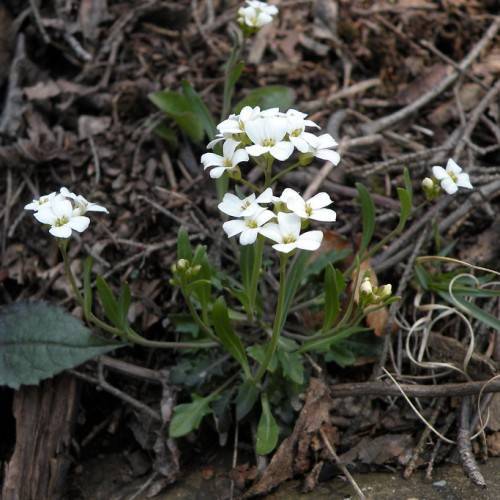
Lyre-Leaved Rockcress
Arabidopsis lyrata
Watering:
Average
Hardiness Zone:
Sun:
full sun,part shade
Leaf:
Yes
Growth Rate:
Low
Drought Tolerant:
Yes
Salt Tolerant:
Yes
Care Level:
Medium
watering
Lyre-Leaved Rockcress (Arabidopsis lyrata) should be watered about once every 1-2 weeks, allowing the top 1-2 inches of soil to dry out in between waterings. Too much water can lead to root rot, so make sure the soil does not stay overly moist for long periods of time. During periods of dormancy or drought, waterings can be reduced or stopped completely. During the growing season, supplement rainfall with additional waterings if the leaves start to wither or droop due to lack of water.
sunlight
Lyre-Leaved Rockcress (Arabidopsis lyrata) prefers full sun and at least 6 hours of direct sunlight per day. It prefers a position in full sun during spring and summer, going into shade during the hottest part of the day. In the winter months, however, it should still receive a few hours of direct sunlight each day. Although some shade is beneficial, too much shade could lead to poor growth and flowering.
pruning
Lyre-Leaved Rockcress should be lightly pruned in early spring when new growth begins. Pruning should be done conservatively to prevent shock and encourage the growth of dense foliage. Start by removing dead, dying, or damaged stems or leaves, using sharp, sterile pruning shears. Next, remove any errant stems that may cross-over other stems or grow in the wrong direction. Finally, cut back any of the main stems that are growing too densely to promote good air circulation in the plant. Pruning should be done gently and conservatively, and no more than a third of the plant’s foliage should be cut at 1 time.
